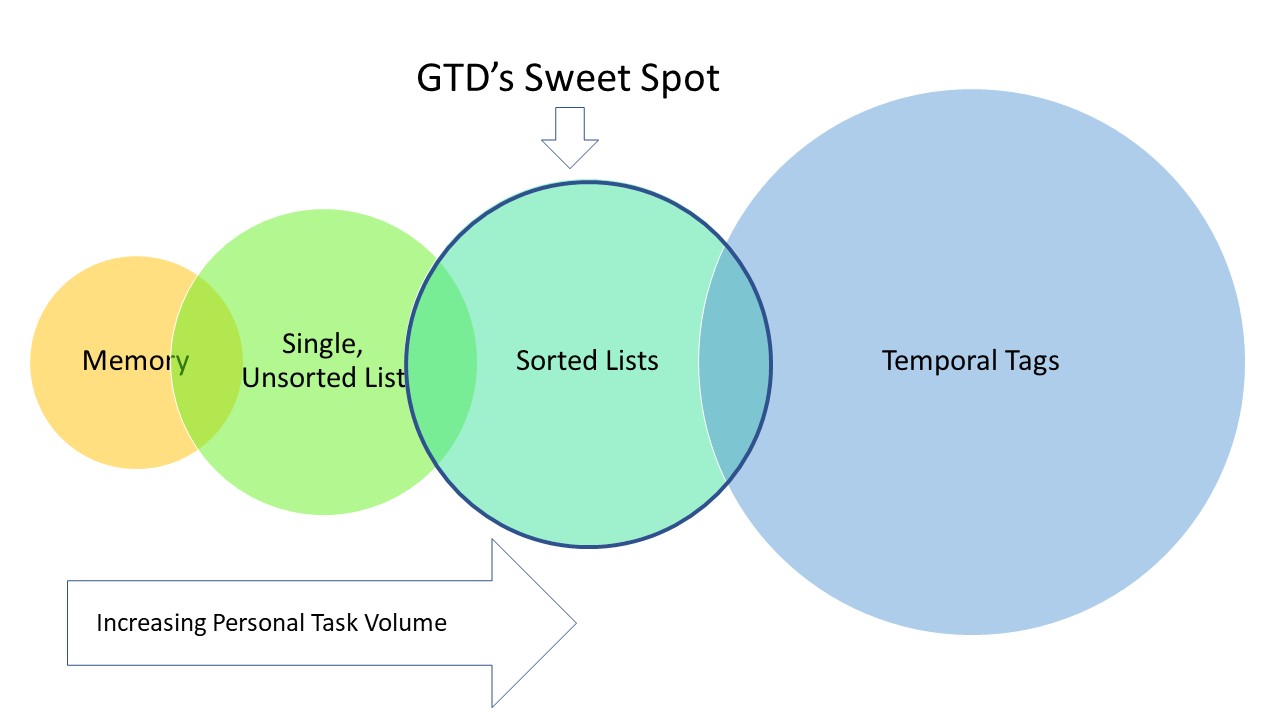
If you’re not in the correct context, obligatorily you’ll have to go to it to do whatever you have in the Calendar. They are not necessary in the Calendar, since the actions here are mandatory. Their purpose is to limit the list of possible next actions to a manageable number (ideally, around 10 when you combine contexts with your energy and time available) so you can easily decide what are you going to do now. When do you use the contexts? Only in the Next Action’s list. In the processing stage is when you spend some minutes thinking what’s the real meaning of this? which is the next step to achieve it? What do I need to do it? Don’t capture and process stuff at the same time. It’s very common wanting to do it at the same time in which you capture something, but I remind you that capturing is a stage in which you simply write down something you had in your head, quickly, without thinking. When do you assign the context to the action? Always in the moment of processing. In FacileThings we use hashtags, a more specific form of tag, very popular thanks to Twitter. Tags are the most common way of implementing contexts in personal productivity applications, since they provide great freedom and flexibility when defining any type of taxonomy. If you’re using a high-tech tool (software), there must be a way to classify your actions so that later on you can filter only the actions of a specific category.

If you are practicing GTD with low-tech tools (pen & paper), in order to organize your tasks by contexts you’ll need to use a piece of paper for every usual context, and add a new action to the corresponding paper according to the context in which it has to be done. They allow you to prioritize dynamically when the tools and people at your disposal vary. Instead you should use the computer context which will allow you to bear in mind that task when you are working with your laptop at a coffee shop.Ĭontexts are a way of modern prioritization and provide the necessary flexibility so that you can adapt your activity to increasingly changing circumstances. If you have a desktop computer and laptop at home you mustn’t use the home context for a task that you can do with both computers. It’s not about defining the situation in which you would like or want to do something but rather the situation in which you have to do it. The context must always be an objective criterion. This is a completely new concept for those who start practicing GTD and it is sometimes misused. In the same way, it’s also silly to consider actions you can only execute when you’re face to face with your boss if he is on holidays, unavailable. It’s absurd to consider actions that you can only do at home when you are at the office, or to take into consideration tasks that require constant access to the internet if you’re not going to have the possibility of connecting in the next few hours. If you have a lot of actions in your to-do list that you cannot carry out right now and you don’t use contexts, you are obliged to continually reconsider all the options over and over again. It’s a concept which aims to maximize focus and minimize stress. When you assign to each of your actions the context in which it has to be done, you make much easier to decide the next action you should be doing, since the to-do list will be reduced to those actions that can be performed in the context in which you are at the moment.


A context defines what you need to be able to carry out an action, and it can be a place, a tool or a person.

The use of contexts is a key element in the GTD methodology.


 0 kommentar(er)
0 kommentar(er)
